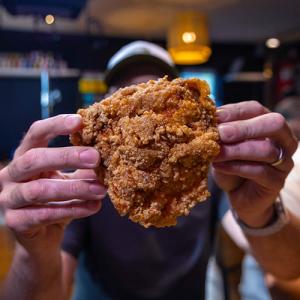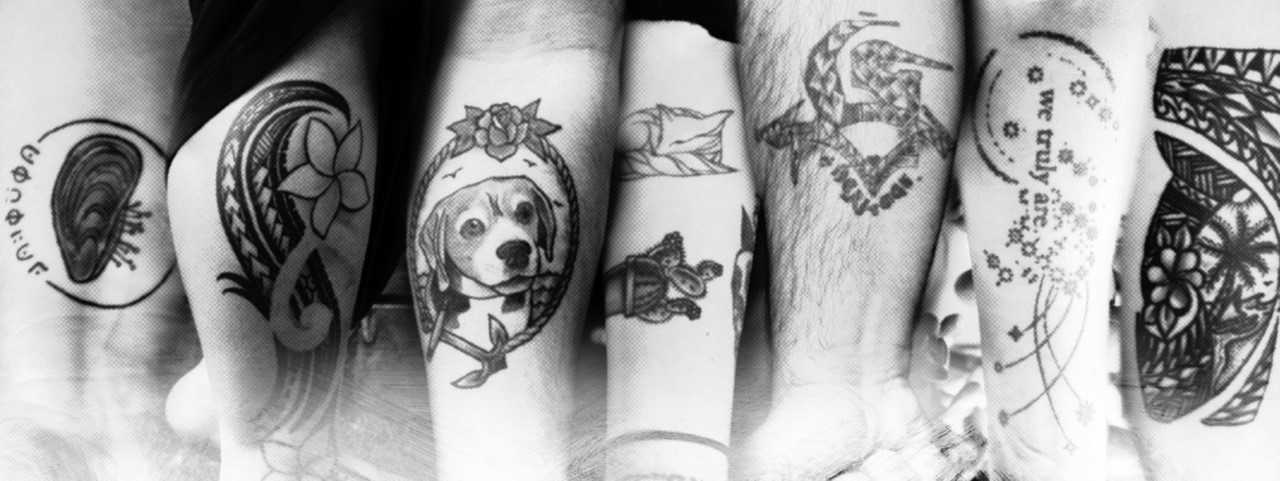
Art Appreciation
A group of UW Tacoma students, faculty, staff and alumni share the stories behind their tattoos.
UW Tacoma is more than just books and research, homework and deadlines, meetings and initiatives. At its heart, UW Tacoma is its people. In this spirit, we reached out across campus to see if people would discuss the most private of things with us — their bodies. Specifically, we wanted to talk about their tattoos, why they got them and what they meant. Some were skeptical and some politely turned us down. Eight decided to venture into the unknown and take this journey with us.
Why tattoos? In a way, the answer is self-evident: a wearer carries a tattoo around everywhere, 24/7/365. Whether normally hidden behind clothing or visible, the tattoo brings to life the idea of wearing one’s heart on one’s sleeve. Sharing tattoo stories is like putting out a welcome mat, like saying, “Let me tell you a little about myself.”
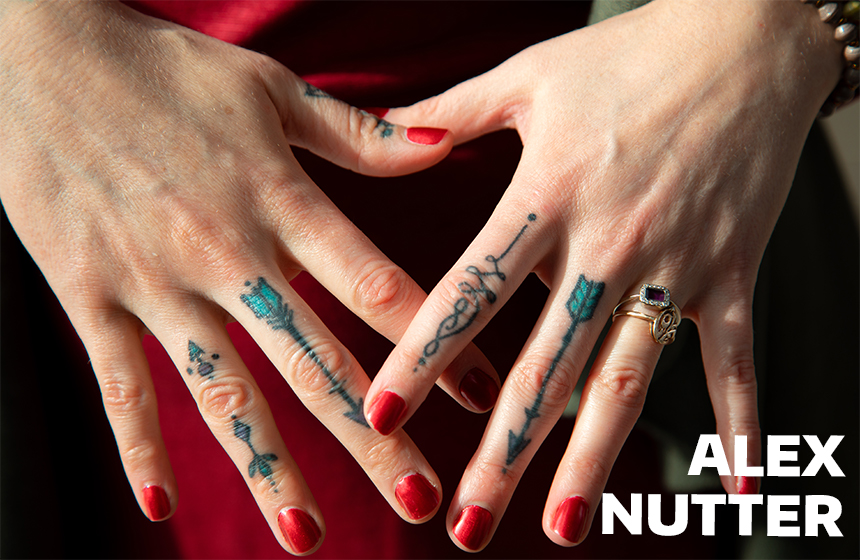
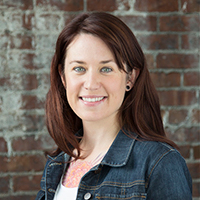
Alex Nutter used a friend’s driver’s license to get her first tattoo at age 16. “This was a period of my life where I wanted to push boundaries,” she said. What started as something akin to teenage rebellion has morphed into a genuine respect and interest in tattoos. Nutter has pieces on her arms, chest, back and fingers. “I don’t think a lot about what a tattoo means,” she said. “I’m about the aesthetics and the art.”
For Nutter, getting a tattoo is about people rather than pieces. “I’m interested in artists and who I’d like to work with,” she said. Tattoos, like most professional art, are expensive. “It’s definitely something you have to plan for,” she said. “Let’s say you really love an artist’s work and they live on the other side of the country. Well, you have to take that into account and start saving.”
Nutter studies and teaches about popular culture. “Tattoos have undergone this transition — at least for some,” she said. “If you have privilege then tattoos are no longer seen as a marker that you’re dangerous but that stigma still exists for other communities particularly those who struggle around the margins.”
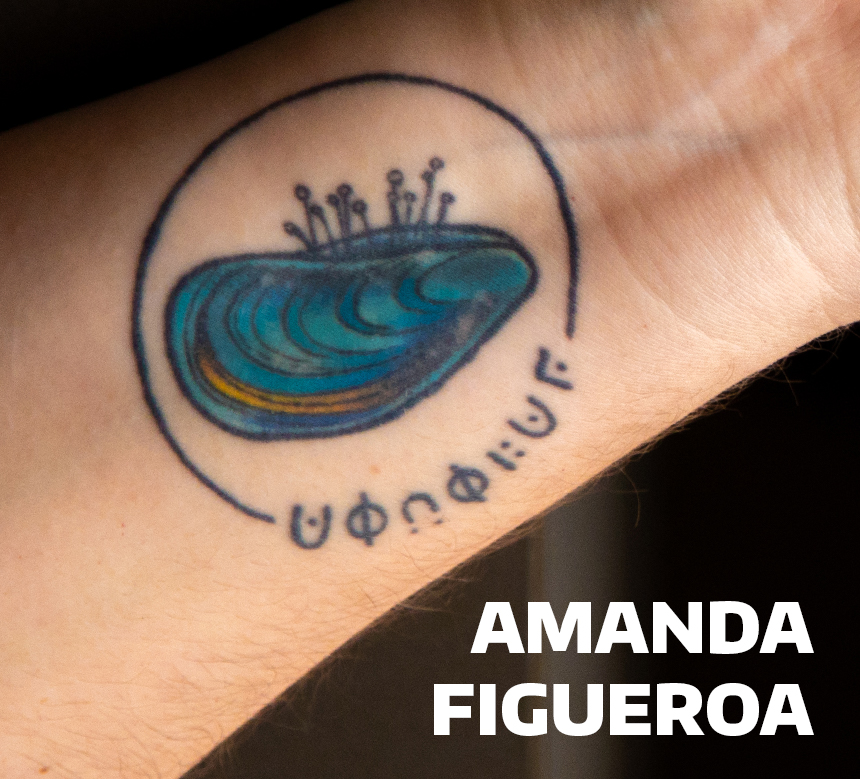
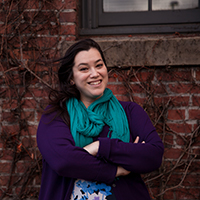
A trained marine scientist, Amanda Figueroa is familiar with mussels. “Mussels have strong attachments to their homes and to each other,” she said. Figueroa decided to get a tattoo of the bivalve after her experience with the Tacoma/Pierce County American Leadership Forum. The forum is a “nonprofit organization whose mission is to join and strengthen diverse leaders to better serve the common good.” Figueroa developed a bond with the people in her group. “We really cared about each other — they’re family,” she said. Indeed, the word surrounding the tattoo translates into “family.” “I like what the mussel symbolizes —creating a protected space through a connected community," said Figueroa.
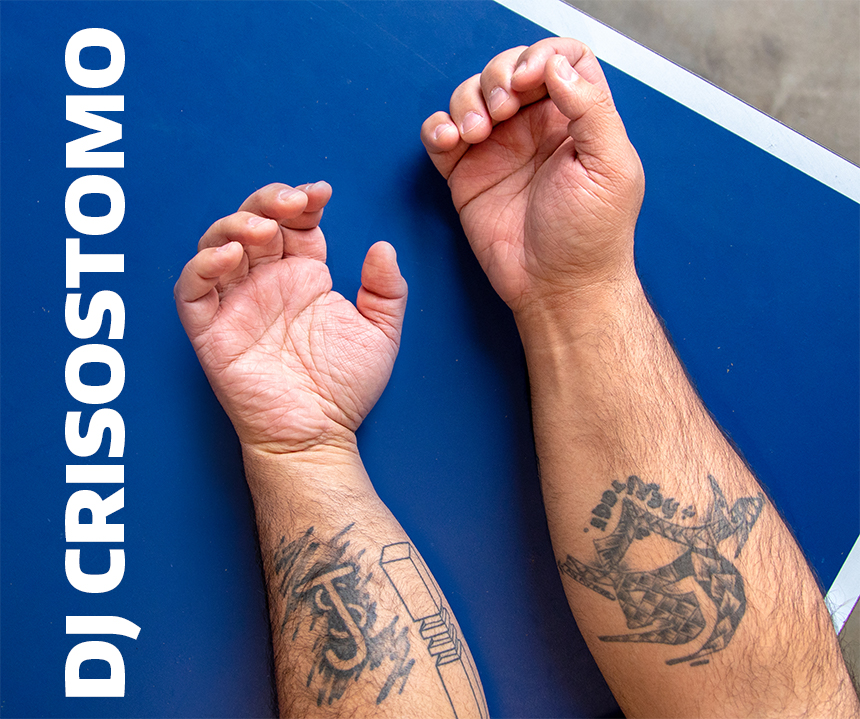
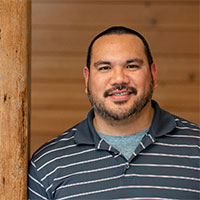
Crisostomo got his first tattoo at age 29. The twisting “LG” on his right forearm stands for Leon Guerrero — his mother’s maiden name. Crisostomo’s cousin made the design and his uncle did the tattoo. The letters are adorned with traditional Chamorro weaving.
The “JS,” also on Crisostomo’s right arm, honors his father. First Sergeant Jose San Nicolas Crisostomo was killed by a roadside bomb in Afghanistan. “When my parents were first starting out they had nothing and my dad would put JS on everything,” said DJ Crisostomo. “This is a way to show that I belong to him.” The etching component of the tattoo comes from pencil stencils Crisostomo made of family headstones.
Crisostomo’s father also did construction work. “Whenever he built a deck or an awning he’d notch three lines into his pillars,” said DJ Crisostomo. “This serves as a reminder to me that I need to take pride in everything I do.” All of Crisostomo’s tattoos are on his right arm, his strong arm.
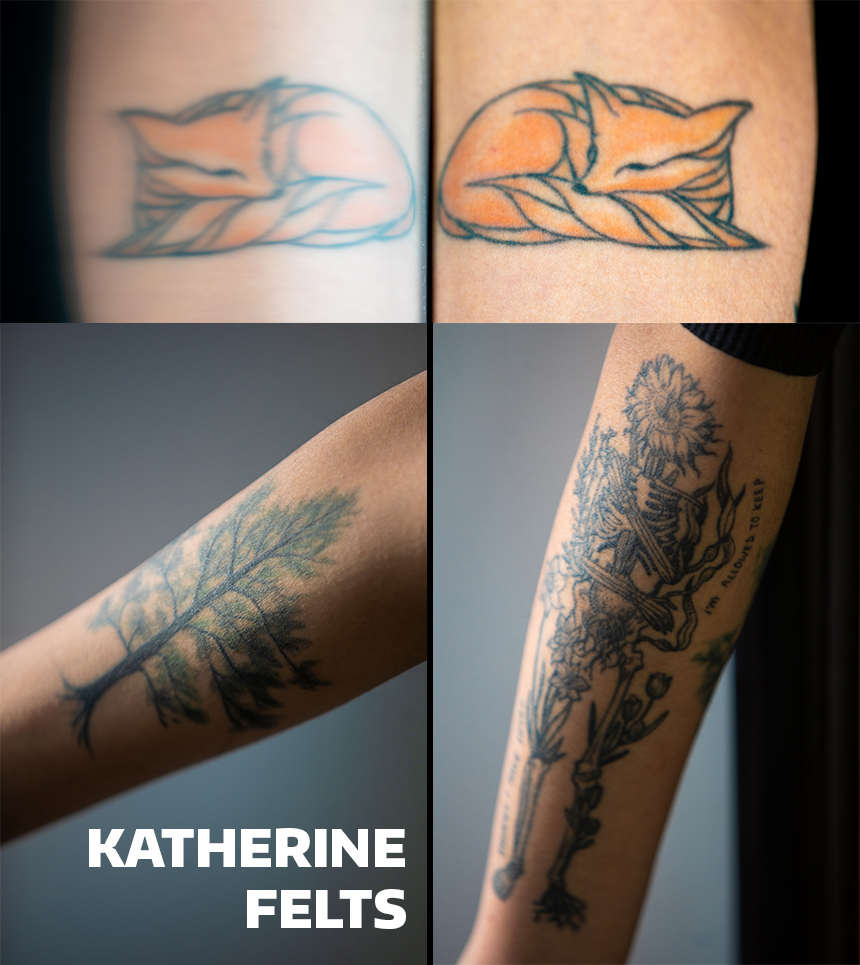
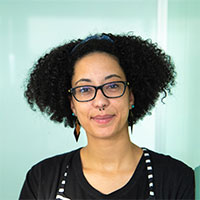
Katherine Felts and a friend drove seven hours in a snowstorm from Brussels, Belgium to Berlin, Germany to get a fox tattoo. “The artist posted it on Instagram as available ‘flash’ (pre-drawn tattoos),” said Felts. “There were four foxes posted and all were based off a dog she’d had that passed way in the last year.” Felts’ dedication to body art isn’t surprising — she has 17 tattoos. “I wanted to get a fox because I’d encountered them so often in my life,” she said. “I love how clever they are, how present they are in literature and art and how beautiful they are.”
In 2015 Felts found herself at the National Gallery, London. “I got there an hour before close and spent that time rushing through paintings on the wall,” she said. One piece stopped Felts in her tracks. “It was this snowy landscape with a man and trees,” she said. “The piece resonated with me and got me thinking about being steadfast and having faith in myself.” Felts ended up getting a tattoo of a tree to remind her of the painting.
Felts imbues her tattoos with meaning and the one on her right forearm is perhaps the most evocative. “This was custom work based on trauma and a really negative time in my life,” she said. “I needed a way to reclaim my body.” Felts worked with a tattoo artist in Portland to create a skeleton adorned with flowers and other plant life. Tulips and daffodil are some of Felts’ favorite flowers while the Saguaro blossom is a reminder of Arizona, a place she considers home. “The figure is embracing itself and that’s for me to know that I’m safe,” she said.
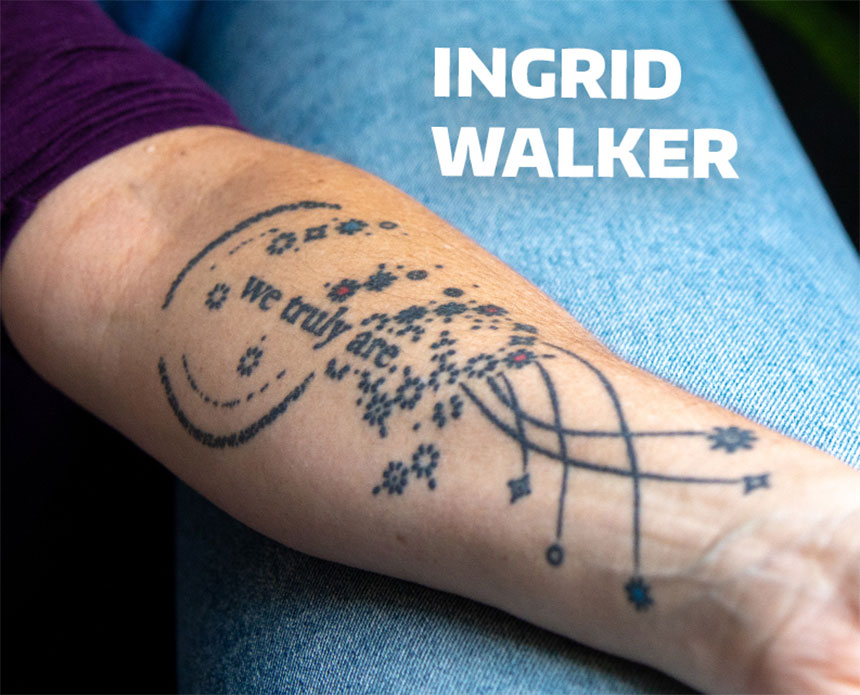
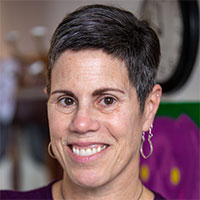
Ingrid Walker noticed a familiar design on a fellow passenger. Walker approached the traveler in the airport terminal and the two began chatting about their respective tattoos. Walker lives in Tacoma and the man hailed from Japan yet both are part of the World Tattoo Project. The project is based on “Love Letta to de Worl’” by Frank X. Walker. The Kentucky Poet Laureate crafted the poem as a way to discuss the impact humans have had on the planet.
Thousands of people from around the world have taken part in the project including Walker and her son. “It’s beautiful to think about the fact that people have become a walking poem on Earth,” said Ingrid Walker. Participants select a word or line from the poem and combine them with a predesigned image of star-like pixels and a partial circle like the cancellation mark you’d find on mail — a letter — that has been delivered. Afterwards, they have the option of uploading a photo of their tattoos for others to see.
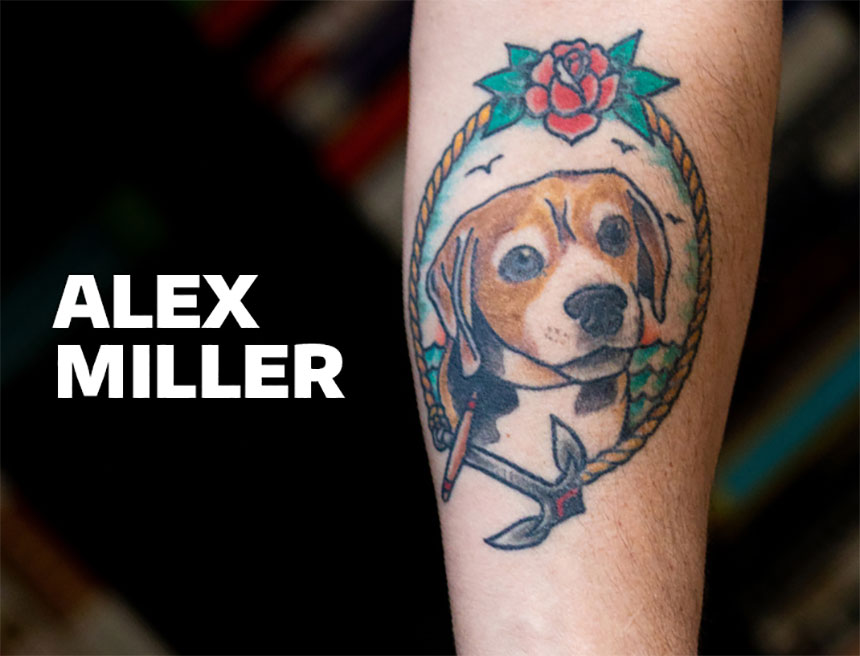

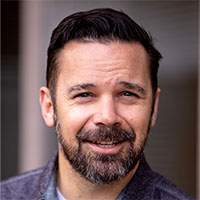
The tattoo on Alex Miller’s left forearm is an homage to Sailor Girl, a beagle that he and his partner, UW Tacoma Assistant Professor Danica Miller, welcomed into their lives way back in grad school, when the pair lived in a 400-square-foot 4th-floor walkup in the Bronx. “She was a great dog, and I still really miss her,” said Miller. “We got her before we had kids, and so she was kind of the first rung on the ladder of responsibility.” Sailor passed away in the summer of 2017.
Farther up on his left arm is an image inspired by one of Miller's favorite books, Chris Ware’s graphic novel Jimmy Corrigan, the Smartest Kid on Earth. The story follows a man who meets his estranged father for the first time after 36 years. “The story really plays with the idea of the father as superhero,” said Miller. "Ware's work can get pretty dark, but at its heart is a celebration of the power of human connection."
The last tattoo on Miller’s left arm is a reference to the Steeplechase Funny Face at Coney Island, a beach in Brooklyn the Millers used to frequent when they were dating. "This one was actually a gift from Danica," said Miller of the tattoo's origins. "My kids think it's kind of creepy, but it has always reminded me of a really exciting period in my life."
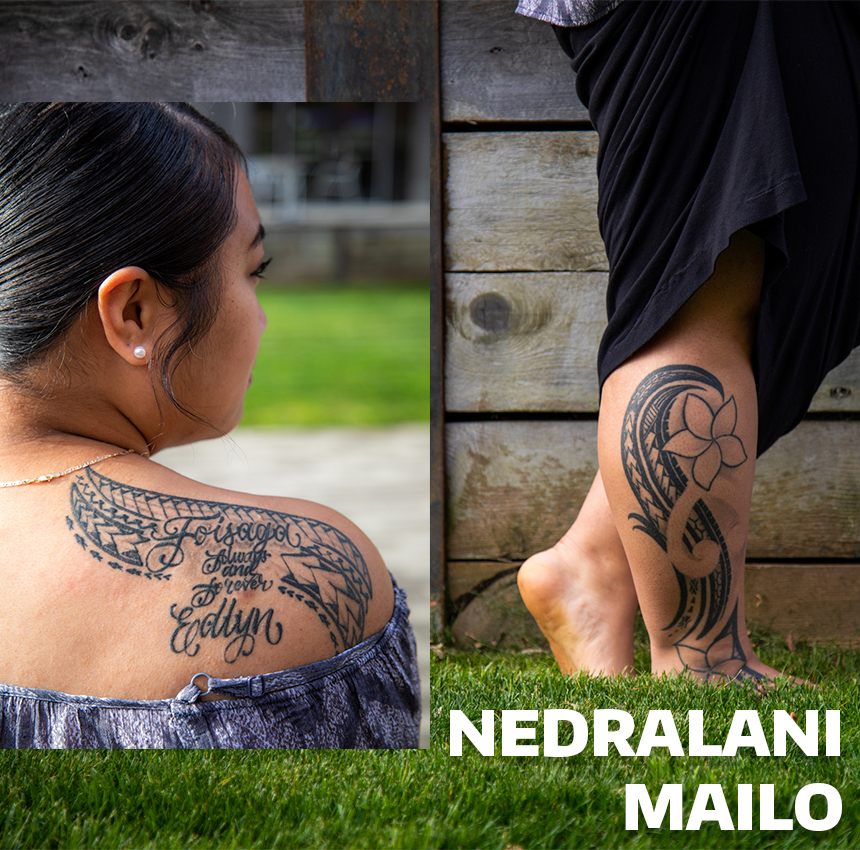
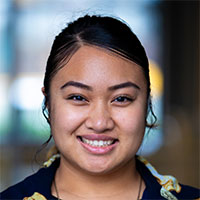
Nedralani Mailo got her first tattoo in 2016 but she’d been thinking about getting one for years. “I wanted something that honored my Samoan heritage,” she said. The tribal design runs from Mailo’s right foot to just below her knee. “The symbols tell a story about our history,” she said. These symbols tell the stories of our ancestors and our culture. We come from a culture of warriors and so you'll see a lot of symbols that represent our history in warfare.”
Mailo got her second tattoo while in New Zealand in 2018. Her inspiration for this tattoo was her father’s. Her father's tattoo has her name, Nedralani, and her mother's name, Edlyn, linked by the words “Always and Forever.” Mailo's tattoo is similar, but links her father, Foisaga, and her mother, Edlyn, with that same phrase, “Always and Forever.” Similar to her first tattoo, Mailo wanted tribal designs surrounding the words to symbolize her culture and family as one.
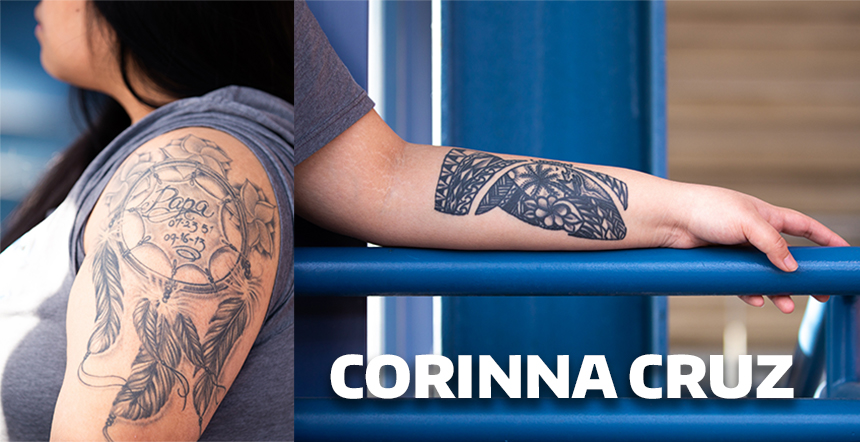
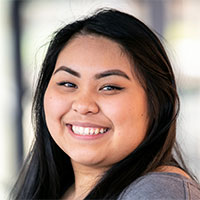
Corinna Cruz, a social welfare major, chose to honor her grandfather or “papa” with her first tattoo. “He was the only father figure I knew,” said Cruz. “It was hard not having him around.” Cruz had long been interested in dreamcatchers. “They help me feel more spiritually connected to safety,” she said. “I like the idea of having something to prevent bad dreams from happening.”
Cruz is Chamorro and Guam is prominent in both of her tattoos. The dreamcatcher is ringed with flowers that are meant to symbolize the island nation. The tattoo on her left forearm is in the shape of a latte stone. These pillars, found throughout Guam, are thought to have been used as building supports. Inside the stone is the Seal of Guam, a nod to both place and family. “It’s permanent, like a something of my grandfather no matter what,” said Cruz.
